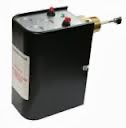The Daytona 500 is all about speed and power and getting to
the finish line first. Hydronics is basically the opposite — but you’d never
know that from the way most hot water heating systems are installed these days.
Historically, North American hydronic designers and
installers have specified and installed circulating pumps that pump more water
and use more power than what is actually needed. It’s called “over-pumping.” And
if a system underperforms, the first reaction of many technicians is to install
a bigger, more powerful pump. But this almost never solves the problem.
It’s a chicken vs. egg thing. Installers either don’t have
the knowledge or won’t take the time to calculate the pumping requirements for
the system, and wholesalers don’t stock more than a few different pump models.
I’ve heard installers justify their pump choice by the “bigger is better” mentality.
And wholesalers have told me that they’d stock a wider variety of pumps but the
installers aren’t asking for them. That’s a shame.
In hydronics, like stock car racing, the object is to go
round and round until you cross the finish line and meet your goal. But unlike
stock car racing, the winner in hydronics gets there with as little effort and
speed as possible. The goal is delivering the right amount of heat from the
boiler to the heat emitter (radiator, radiant floor panel or baseboard heater,
for example). Pushing the water faster doesn’t make that happen any better. It
just wastes energy!
Over-pumping can also create a condition known as velocity
noise, which is caused by the water traveling too fast through the pipe and
fittings. It can also cause erosion corrosion — a wearing away, or eroding, of
the pipe wall due to the scouring action of high-velocity water flow.
But there’s hope. A new generation of circulators uses
variable-speed technology and highly efficient electronically commutated (ECM)
motors to vary their output to the specific needs of your system. If a zone
valve closes, the pump slows down. If another opens up, the pump speeds up.
Some are
 |
| Variable-speed ECM circulator |
I’ve been using these variable-speed ECM pumps for several
years now and have found them to be incredibly energy-efficient and versatile —
especially for systems subject to changing flow-rate requirements. But they’re
not the answer for a poorly designed system. While these pumps are capable of
responding to a wider range of conditions, they still have their limitations.
The application of solid design principles will determine the best application
for these new-generation pumps.
You could compare great hydronic pumping to the tortoise and
the hare. A bigger, faster pump will just wear out your system while a slower,
steadier, variable-speed pump, like the tortoise, will win the race — every
time.
Heidronically yours,





